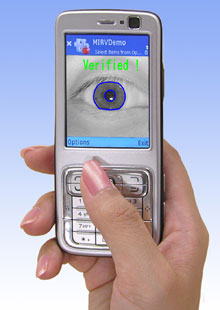 Tokyo-based Ko-sin Printing has developed a printing process that allows authors to add a more personal touch to their printed works by using ink that includes their DNA.
Tokyo-based Ko-sin Printing has developed a printing process that allows authors to add a more personal touch to their printed works by using ink that includes their DNA.
Once DNA is extracted from a human (or animal) hair or nail sample provided by the author, it is blended with a special ink and used in the printing process. Ko-sin has already put the technology to use in some self-published autobiographies whose title pages are printed with ink that includes the author's DNA. Mixing DNA in with the ink does not alter the appearance of the page, the company says.
Ko-sin also claims it is possible to extract genetic information from materials printed using this process. When the company sent a sample page to a DNA laboratory, the lab technicians were able to isolate and extract the DNA from the page.
The patent-pending printing process was invented by Ko-sin's president, Mr. Yoshida, who drew upon his years of experience researching and developing ink. Ko-sin hopes the process will appeal to autobiographers who want to add value to their work by including their DNA, or to people who wish to insert the DNA of beloved pets into printed materials. The company is now investigating other potential applications.
[Source: GIGAZINE]

 On November 6,
On November 6, 
 Forget about fingerprints and DNA -- the way you smell has been added to the list of biometric data that can be used as personal identification. Police in China are now using body odor data to identify suspects in criminal cases.
Forget about fingerprints and DNA -- the way you smell has been added to the list of biometric data that can be used as personal identification. Police in China are now using body odor data to identify suspects in criminal cases.